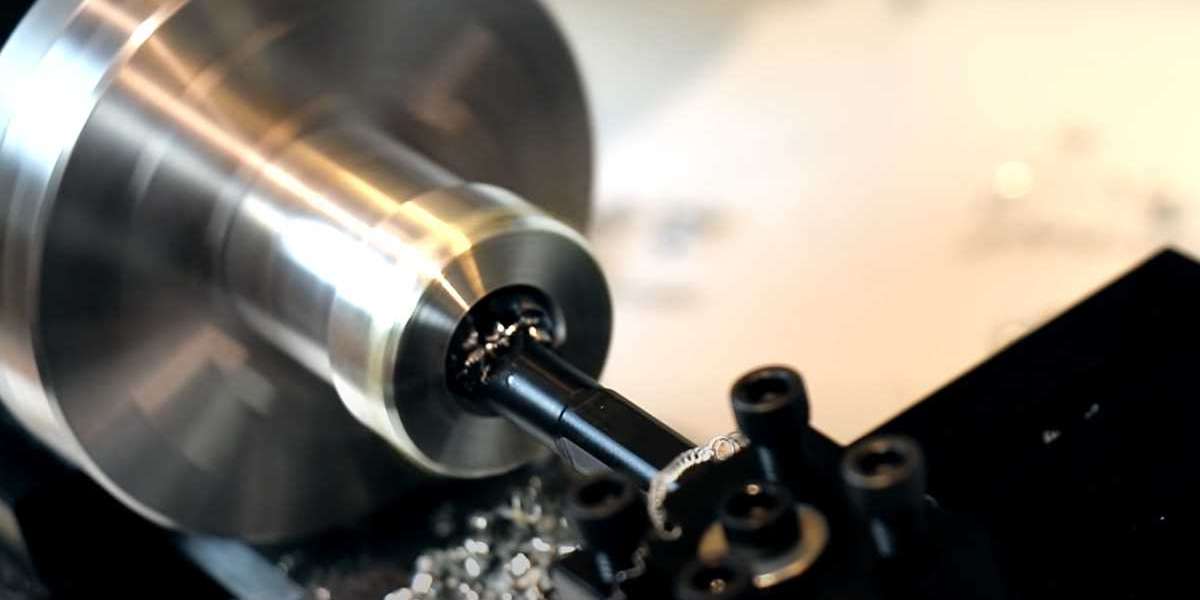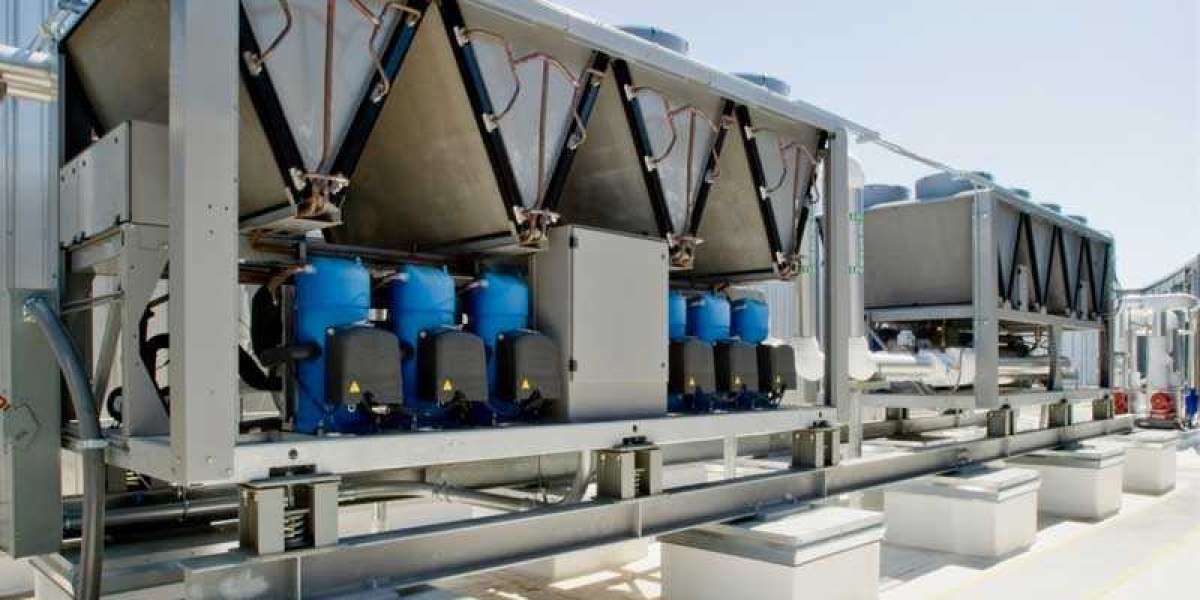Boring machining is an essential process in precision manufacturing that involves enlarging or refining an existing hole in a workpiece. Unlike drilling, which creates a hole, boring increases the diameter of a pre-existing hole and improves its accuracy, finish, and overall quality. The goal of boring is to achieve exact tolerances, precise hole dimensions, and enhanced surface finishes that meet the exacting standards of various industries, including aerospace, automotive, energy, and heavy machinery.
Boring is used to manufacture a variety of components that require tight tolerances and smooth finishes, such as engine blocks, turbines, molds, and medical devices. This article provides an overview of Boring Machining, its process, tools, types of operations, applications, and the benefits it offers to modern manufacturing.
The Boring Machining Process
Boring is typically performed on machines like CNC (computer numerical control) milling machines, vertical or horizontal boring mills, or dedicated boring machines. The basic principle behind boring is to enlarge a previously drilled or cast hole to achieve precise dimensions and a high-quality surface finish. The process generally follows these steps:
Workpiece Setup: The workpiece, which may have a pre-existing hole from a drilling or casting operation, is carefully set up on the machine. Proper clamping or fixturing ensures that the workpiece is securely held, preventing any movement during the machining process. Correct alignment is critical to ensure concentricity and prevent inaccuracies in the final hole.
Tool Selection: The choice of boring tool depends on the material of the workpiece, the size of the hole, and the precision required. Common tools used in Boring Machining include boring bars, adjustable boring heads, and CNC boring tools. Each tool is selected based on the operation’s requirements—whether it’s a rough cut or a finishing operation.
Cutting Parameters: Setting the right cutting parameters is essential for achieving optimal results. Parameters such as cutting speed, feed rate, and depth of cut need to be adjusted according to the material being machined and the type of boring tool used. Softer materials may allow for higher cutting speeds, while harder materials may require slower feed rates to prevent excessive tool wear.
Material Removal: The boring tool, which can either rotate or move along a linear axis, removes material from the interior of the hole. The material is gradually removed in small increments, starting with roughing cuts and followed by finishing cuts. The process is precise, with the goal of achieving the desired diameter, alignment, and surface finish.
Finishing Passes: Once the hole has reached its approximate size through rough cutting, finishing passes are made to achieve the final, precise dimensions and a high-quality surface finish. These passes often involve lighter cuts to minimize tool wear and ensure a smoother hole surface.
Types of Boring Operations
Boring machining can be customized to suit different applications. Based on the machine and the complexity of the task, several types of boring operations are employed, including:
Horizontal Boring: In horizontal boring, the workpiece is mounted horizontally, and the boring tool rotates along the horizontal axis. This type of boring is commonly used for large, heavy components like engine blocks, pump housings, and large industrial machinery parts. Horizontal boring is ideal for large workpieces because it provides good rigidity and precision over large distances.
Vertical Boring: In contrast to horizontal boring, vertical boring involves the tool rotating vertically, and the workpiece is typically mounted on a vertical milling machine or CNC machine. Vertical boring is suited for smaller components or situations where precise depth control is needed. It is commonly used for making smaller holes or for precision work on parts such as gears, shafts, and housings.
Line Boring: Line boring is used to machine multiple holes that are aligned in a straight line. This operation is often seen in the manufacturing of parts like engine blocks and large frames where several holes need to be precisely aligned. Line boring ensures that the holes are drilled or bored accurately, minimizing misalignment and improving the overall assembly process.
Deep Hole Boring: Deep hole boring is a specialized technique used to produce long, deep holes with a high depth-to-diameter ratio. This process requires highly rigid equipment and specialized tooling to ensure that the hole remains straight and true over its length. Deep hole boring is commonly used in industries like aerospace, oil gas, and heavy equipment manufacturing, where deep holes are needed in parts like engine blocks or turbines.
Backboring: Backboring is a method of boring from the opposite side of a workpiece to finish or enlarge a hole. It’s used when access from one side of the workpiece is limited or when a hole needs to be completed from both sides. This method can be crucial in situations where precise depth or diameter control is required from the back side of a part.
CNC Boring: CNC boring is an advanced method where the boring operation is controlled by computer programming. With the precision of CNC, boring can be done with tight tolerances, complex patterns, and a high degree of automation. CNC boring machines are widely used in high-volume production, where consistent quality and repeatability are critical.
Tools Used in Boring Machining
The selection of tools for boring machining depends on several factors, including the material being machined, the required hole size, and the type of boring operation. Here are some common tools used in the process:
Boring Bars: A boring bar is a long, cylindrical tool that holds a cutting insert or a single-point cutting tool at its end. The boring bar rotates within the hole, removing material to enlarge the diameter. Boring bars come in a variety of sizes and designs, with adjustable versions that allow for fine control of the hole diameter.
Adjustable Boring Heads: Adjustable boring heads are specialized tools that allow for fine-tuning of the boring diameter during operation. These heads contain an adjustable mechanism that enables precise adjustments in small increments. Adjustable boring heads are useful when creating holes with varying diameters or when fine-tuning the hole size is necessary after rough boring.
Gun Drills: Gun drills are used for deep hole boring, where the hole depth is much greater than its diameter. Gun drills are highly specialized tools with a narrow, long body designed to minimize deflection and improve hole accuracy. They are commonly used in industries that require deep, straight holes, such as in aerospace, energy, and automotive applications.
CNC Boring Tools: CNC machines are equipped with specialized boring tools that can handle multiple axes of motion to perform complex boring tasks. These tools are often equipped with precision adjusters and are capable of performing high-speed, automated boring with minimal human intervention. CNC boring tools provide high precision and repeatability, making them ideal for mass production.
Honing Tools: After boring, honing tools can be used to improve the surface finish of the hole. Honing removes any minor imperfections left by the cutting tool, resulting in a smooth, polished finish. It is especially useful when working with parts where high surface integrity is critical, such as in engine components, hydraulic cylinders, and bearing housings.
Applications of Boring Machining
Boring machining is widely used in several industries that require high precision, quality, and surface finish. Some of the primary applications include:
Automotive Manufacturing: Boring is widely used in the automotive industry to machine engine blocks, cylinder heads, and other critical components. The precision required in machining engine components like cylinders and bearings is essential to ensuring the engine’s performance, efficiency, and longevity.
Aerospace: Aerospace components require very tight tolerances and high precision due to the critical nature of these parts. Boring Machining is used extensively to produce turbine housings, compressor components, and engine parts where exact hole dimensions and concentricity are required for optimal performance and safety.
Oil Gas: The oil and gas industry uses deep hole boring techniques to create parts such as drilling tools, wellheads, and pump shafts. These components often require deep, accurate holes to withstand high-pressure environments. Boring is also essential in manufacturing valves and pressure vessels that are used in exploration and production equipment.
Heavy Machinery: In heavy machinery and industrial equipment manufacturing, boring is used to produce large, accurate holes in components such as gearboxes, pumps, and hydraulic cylinders. The precision of these holes is critical for the smooth functioning of complex machinery that operates under heavy loads.
Medical Devices: The medical industry relies on boring to create precise holes in medical instruments, implants, and surgical tools. High-precision holes are required for the assembly of devices such as pacemakers, stents, and orthopedic implants, where the smallest deviation can affect functionality and safety.
Tooling and Mold Making: Boring is commonly used in the creation of molds and tooling, especially when cooling channels or intricate features are required. The ability to accurately machine these features is essential for creating molds that produce high-quality plastic or metal parts in industries like injection molding and die casting.
Benefits of Boring Machining
Boring machining offers several key advantages that make it a preferred method for producing high-precision parts:
Precision and Accuracy: Boring allows for the creation of holes with extremely tight tolerances, making it ideal for high-precision applications such as in aerospace, automotive, and medical industries.
Improved Surface Finish: Boring can significantly improve the surface finish of a hole, making it ideal for applications where the hole needs to have a smooth finish for functionality, such as in bearing housings, valves, and fluid conduits.
Versatility: Boring can be adapted to different materials, hole sizes, and shapes, including tapered, stepped, and complex geometries, making it highly versatile in different manufacturing settings.
Cost-Effective: Boring is often more cost-effective than creating new holes from scratch or using other methods such as EDM (electrical discharge machining) for hole enlargement. It’s also a more efficient way to refine previously drilled holes to meet strict requirements.
Capability for Deep Holes: Deep hole boring techniques allow manufacturers to create long, accurate holes that are difficult to achieve with other methods, making it indispensable for industries that require deep, narrow holes, such as aerospace and oil and gas.
Conclusion
Boring machining is an essential operation in precision manufacturing, enabling the production of parts with highly accurate hole dimensions, superior surface finishes, and tight tolerances. From automotive engines to aerospace components, boring machining serves a wide variety of applications where quality and precision are critical. With the right tools, advanced machines, and optimized processes, Boring Machining continues to be a fundamental technique in achieving the high standards required by today’s manufacturing industries.














